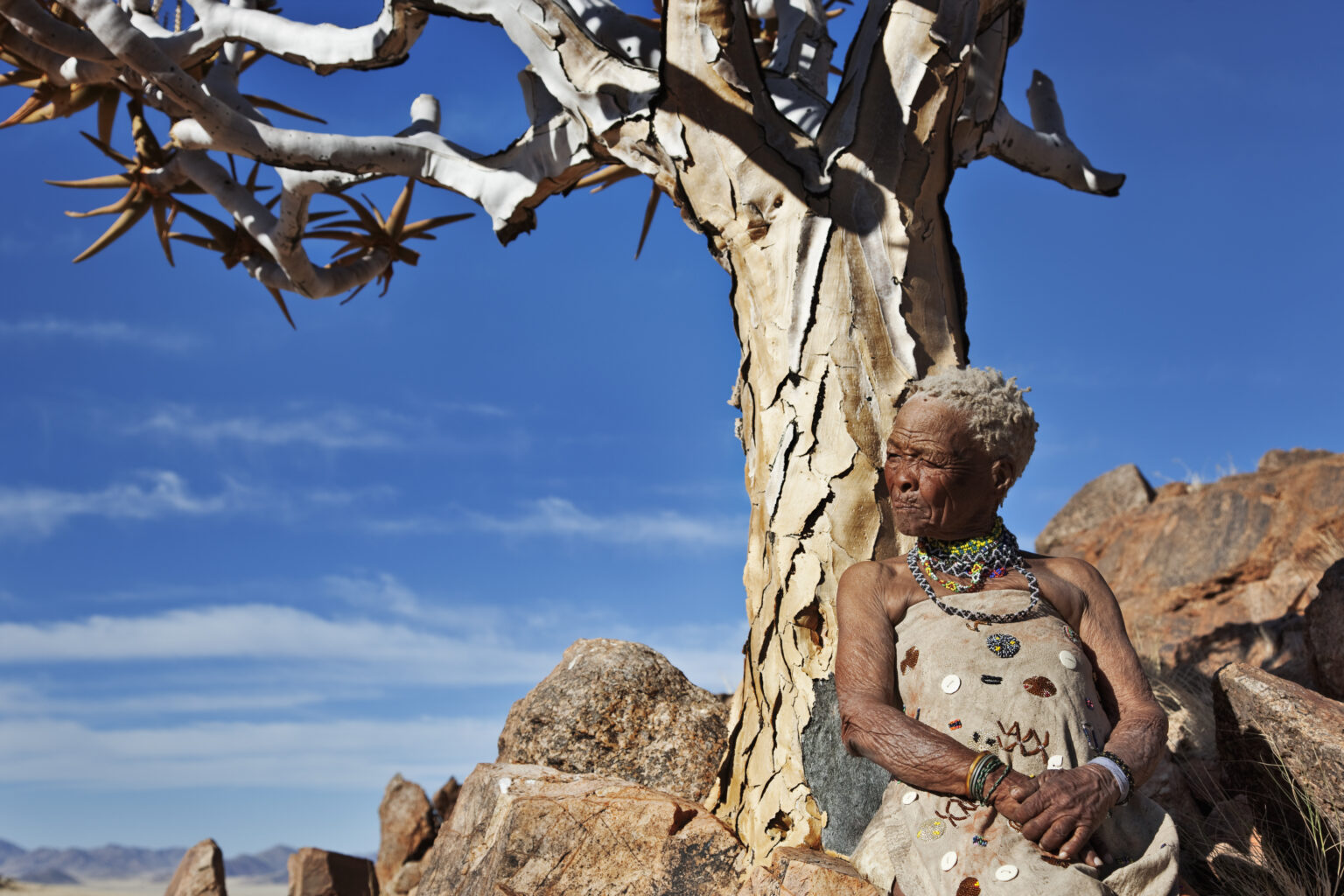
San hunter-gatherers—descended from the oldest distinct lineage of Homo sapiens—are one of many communities helping to rewrite the story of humanity’s origins.Martin Harvey/Getty Images
New evidence is prompting researchers to rethink Homo sapiens’ origin story—and what it means to be human.
AS A UNIVERSITY STUDENT in the early 2010s, I recall how beautifully simple our origin story was: Homo sapiens evolved in East African savannas around 150,000 years ago. Then, sometime around 70,000 years ago, a mutation occurred that endowed these individuals with the capacity for complex, symbolic behavior. This set them apart from any other species and allowed them to leave Africa and take over the world, replacing all other humans they encountered.
This “East Side Story” made sense, based on major finds in the 20th century. The oldest fully modern H. sapiens skulls, dating to at least 233,000 years ago, were found in Ethiopia’s Omo Valley. “Lucy,” the 3.2-million-year-old Australopithecus afarensis, was also unearthed in Ethiopia. The earliest stone tools, dated to 3.3 million years old, were discovered in Kenya.
No comments:
Post a Comment
Note: Only a member of this blog may post a comment.